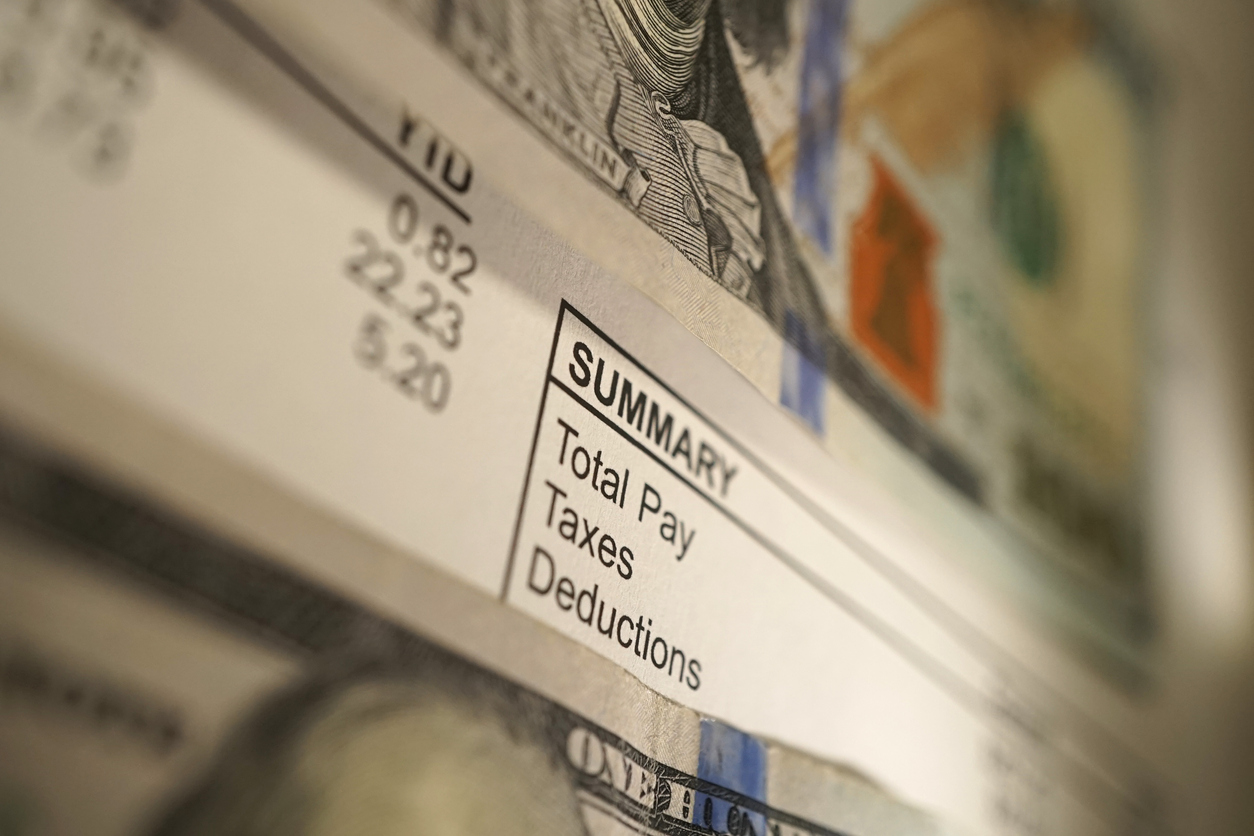
How Do You Create a Retirement “Paycheck?”
When it comes to how to create a retirement “paycheck”, there’s some variation of a question we hear most often from those nearing retirement:
“How do I get my money out of my retirement plan and into my checking account?”
The question is not as simple as it appears – that’s why people ask it. They’re not asking about the mechanics of a 401(k) withdrawal. They want to understand the switch from saving to spending, and it’s an entire cascade of questions covering how to decumulate assets in retirement. These include:
• When should I take social security?
• How can I ensure I’ll have enough income for my needs?
• How can I invest for growth without taking too much risk?
• What about taxes?
There are a lot of decisions to make and creating a financial plan for your retirement years means taking a comprehensive look at how those decisions affect the likely path of your retirement so that you can plan for things down the road.
A good plan can adapt to changing market and economic conditions. It can also be flexible enough to work efficiently if your situation or choices evolve. It needs to ensure you have enough cash to meet income needs and that there are opportunities for growth.
Start with Guaranteed Sources of Income
For most people, there are two sources of guaranteed income in retirement: social security and pension. They each have significant choices attached. There are trade-offs you need to understand, and these impact how much income you’ll receive.
There are a lot of strategies for claiming social security. Whether you are married, if you are the same age as your spouse, who will claim first, and if one spouse is a higher earner are pieces of the puzzle when it comes to maximizing this income source.
If you have a pension, you’ll have to decide whether to take it as a lump sum or a stream of income payments. It’s common to take a lump sum, but it’s a good idea to decide in the context of your entire financial picture.
Getting a clear view of guaranteed income is critical because it will inform the investment strategy that makes up the rest of your retirement income plan.
Social Security – the Basics of the Timing Decision
The premise is simple: the longer you wait to claim, the higher your monthly benefit. The Social Security Administration (SSA) considers the benefit to be “early” if you take it between age 62 and full retirement age (“FRA,” which for most people is between age 66-67, depending on date of birth) and “late” if you begin to claim benefits between your FRA and 70.
Delaying rewards you with an 8% increase in the benefit amount for each year you delay. Claiming early decreases your benefits from what you would be entitled to at FRA.
However, when it comes down to making the decision, there are a lot of other factors to weigh:
• Life expectancy
• Health and wellness
• Retirement lifestyle
• Sources of income until claiming Social Security
• Budget
The decision shouldn’t just be a financial one. The desire to retire at a younger age may outweigh the financial considerations, and social security may be a key piece of your budget.
Asset Management in Retirement: Coping with Volatility
While you were saving for retirement, market volatility made it unpleasant to open your 401(k) statement – but that’s as far as the damage went. You were still making regular contributions, and you weren’t taking money out. The long-term allocation set by your plan administrator was likely adequate.
Retirement brings a new set of challenges. Contributions become withdrawals, and your timeframe is now shorter. This makes the impact of market volatility much greater.
The key to a retirement asset management strategy is that it should be proactive and dynamic. The strategy needs to be flexible, goals-based, comprehensive across your assets, tax-efficient, and above all – you need to have confidence in it.
A bucket approach, in which some of the assets are set up to provide income and capital preservation while others are focused on growth, may work well. Aligning goals to a specific timeframe and then tracking progress and outcomes can help to mitigate risk. It can also put you in a position to make necessary changes proactively instead reactively.
Maximizing Tax Efficiency
Creating a retirement “paycheck” also includes a multi-year plan to pay less in taxes. This is like giving yourself a raise. And in retirement, it’s even more important than when you were working. While your overall tax rate may go down, it also may not. And tax rates tend to increase over time. Creating a tax-efficient retirement paycheck means thinking long-term and enacting strategies that work now – and in the years to come.
Let’s start with tax-deferred retirement accounts. To avoid a penalty, you generally have to wait until age 59 ½ to make withdrawals. But there is an exception: if you retire at age 55 or above, you may be able to take distributions early and avoid the 10% penalty. This can be a source of income to help you delay taking your Social Security benefits.
Your 401(k) plan can also be a source of tax-advantaged income in early retirement. Using these funds now will lower your account balance, which will keep the required minimum distributions (RMDs) lower. RMDs kick in at age 73, and they can be hefty. You’ll be claiming social security at that age and using Medicare, and both of those have taxable components based on your income.
Another option is to roll these funds over into a Roth IRA, which allows them to grow tax-free throughout retirement and then be withdrawn with no tax consequences further down the road. The trade-off is the tax hit you’ll take when you withdraw the funds. The sweet spot for a Roth conversion is early retirement before social security and Medicare begin.
The Bottom Line about Creating a Retirement “Paycheck”
When it comes to creating a retirement “paycheck” means building a plan that can adapt and grow with you as your retirement lifestyle and goals change. Identifying guaranteed income, creating an asset management plan designed to mitigate volatility, and being sensitive to taxes are the broad strokes. There are a lot of details and customization that make your plan work for you. Setting a solid foundation and then tracking and proactively making changes will keep your plan on pace with the lifestyle you want.
Let Hennion & Walsh Offer a Second Opinion
Curious to learn more? Our unmatched client experience will give you peace of mind. Just as you may seek a second opinion about your health, we believe successful investors can gain value and peace of mind by getting a second opinion on their financial health. So, whether you’re worried about today’s uncertain economic environment or looking for increased peace of mind, we can help. Get a complimentary second opinion on all your investment accounts not held at Hennion & Walsh today!
Hennion & Walsh Experience
We have investment professionals, planners and portfolio managers that can collectively analyze your situation through the lens of their respective disciplines. Each member brings valuable insights to apply to your situation. Whether you are looking for income strategy guidance or growth strategy guidance, a second opinion of all your investment accounts not currently held at Hennion & Walsh could be beneficial to your financial health.
Disclosures:
Hennion & Walsh Asset Management currently has allocations within its managed money program, and Hennion & Walsh currently has allocations within certain SmartTrust® Unit Investment Trusts (UITs) consistent with several of the portfolio management ideas for consideration cited above.
Past performance does not guarantee future results. We have taken this information from sources that we believe to be reliable and accurate. Hennion and Walsh cannot guarantee the accuracy of said information and cannot be held liable. You cannot invest directly in an index. Diversification can help mitigate the risk and volatility in your portfolio but does not ensure a profit or guarantee against a loss.




